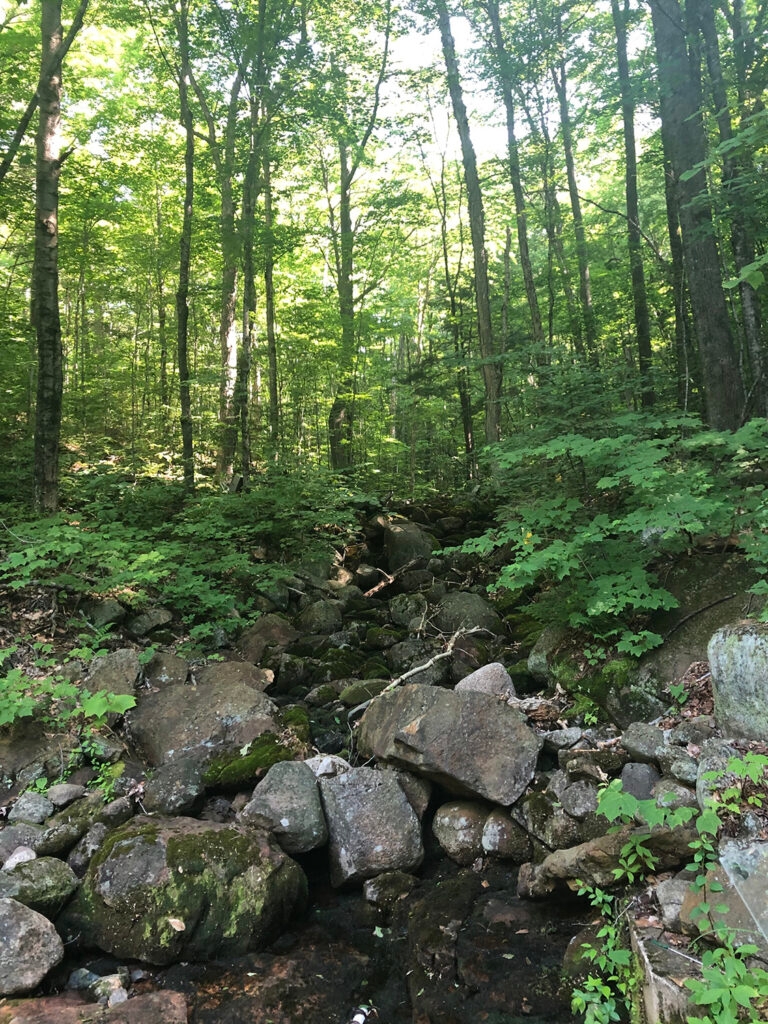Postcard from a Fellow: Amanda Pennino in the White Mountains of New Hampshire
August 25, 2020


Hi everyone! I hope this e-postcard finds you healthy and energized for the upcoming semester! My name is Amanda, I’m heading into the third year of my Ph.D. program in the Department of Forest Resources and Environmental Conservation. I am writing from Hubbard Brook Experimental Forest, in the beautiful White Mountains of New Hampshire where I study soil and soil water chemistry.
Some of my work aims to measure how soil water chemistry changes through time and space, particularly in glaciated forest soils that are still recovering from long-term acid rain inputs. This means running up into the forest after a big rain storm and lugging around a huge water pump to take samples from our well network. I then take these water samples back to the lab and analyze their chemical composition. A lot of my research questions are focused around what role hydrologic dynamics and soil patterning on the landscape play in determining soil water chemistry. A better understanding of the temporal and spatial variability in the chemistry of soil water can give provide key insights to ecosystem processes that are occurring on the landscape (e.g., mineral weathering, water source, plant uptake).


While the pandemic has certainly thrown a wrench in many people’s research plans, I feel pretty lucky that I’ve been able to work with some of the rich historical datasets from Hubbard Brook when I couldn’t access my site. In fact, working with this data has help shift and redefine my own research questions. Not surprisingly, the start to my fieldwork season has looked quite a bit different this year. The lilacs have long since bloomed, the streams in their driest point of the year, and very few people are on site. When I arrived last spring, Hubbard Brook was buzzing with researchers and field technicians from all over the country. Due to low winter snowpack and dry weather, New Hampshire is officially in a drought.
This is less than ideal for someone trying to measure water chemistry (i.e., me). Even after the passing of Hurricane Isaias, I still was only able to collect deep groundwater as the shallow wells sat dry. I’ve been keeping myself busy conducting soil depth surveys and cleaning up some of the wells that were attacked by bears. I plan on coming back to Hubbard Brook to water sample in October, when it is more reliably wetter.



Pandemic, drought, bears… the spring and summer of 2020 has given me some big lessons on adaptation and optimism. We are living in a world with a tremendous amount of uncertainty, but with some of creativity and flexibility we will still succeed. Good luck with the upcoming semester everyone!








